Crossing countries with the new Garmin Edge 1040 Solar
How Garmin’s new flagship computer held up in CW’s race across Wales
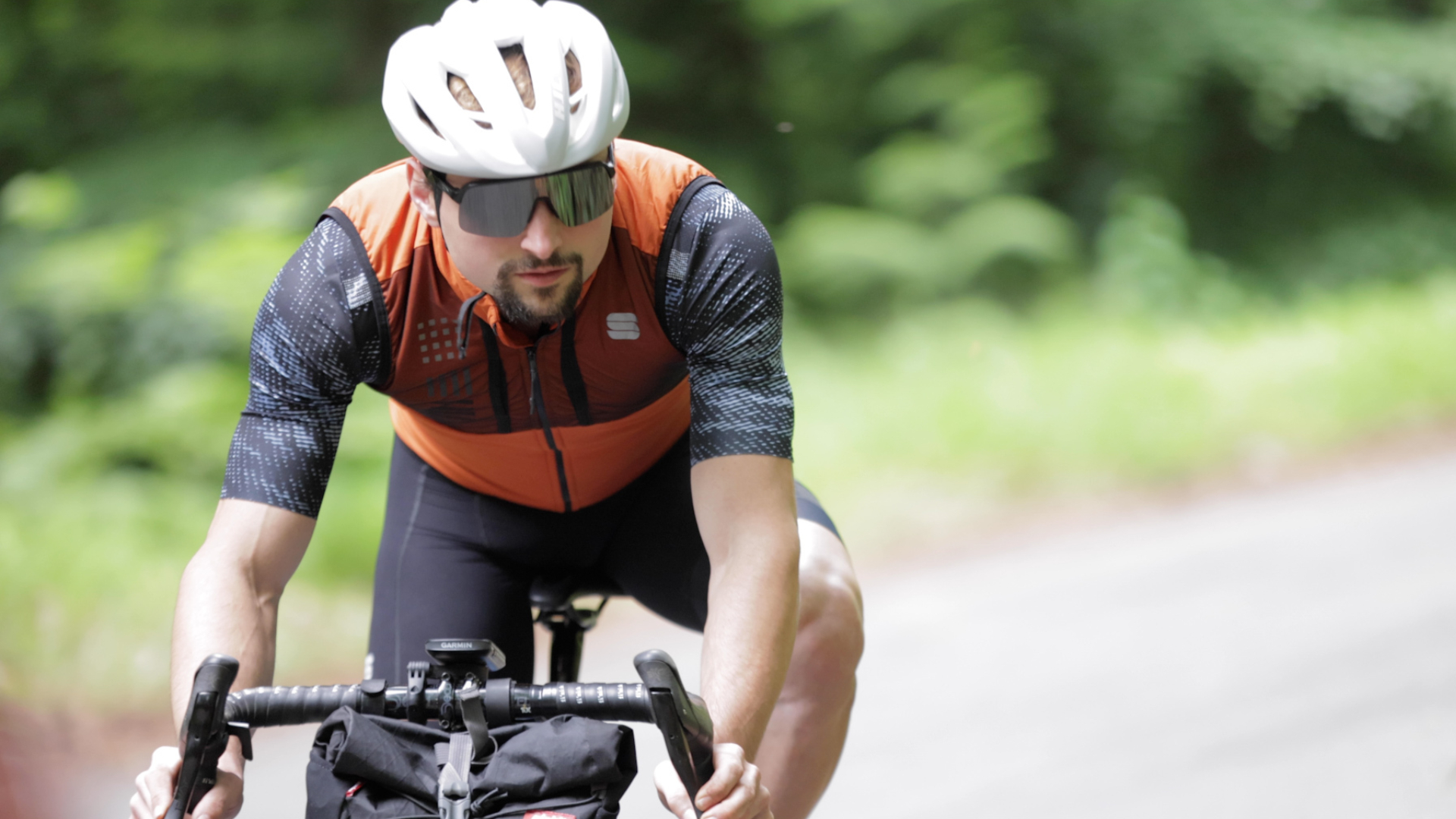
This article was created in association with Garmin.
Marking a distinct leap forward in the Garmin’s cycling computer line-up, the Edge 1040 Solar is arguably the most comprehensive update since the first unveiling of the Edge 1030 head unit way back in 2017.
The headline changes include a massive refresh to the user interface, improved GPS accuracy, a new ‘Power Guide’ pacing function with ‘Real-time Stamina Insights’, and – of course – that head-turning solar rechargeability.
Sam Gupta and Stefan Abram both used the Edge 1040 Solar for their respective road and gravel rides up the length of Wales – it’s a head unit packed with tech, so let’s jump in and take a look through the details.
Solar charging
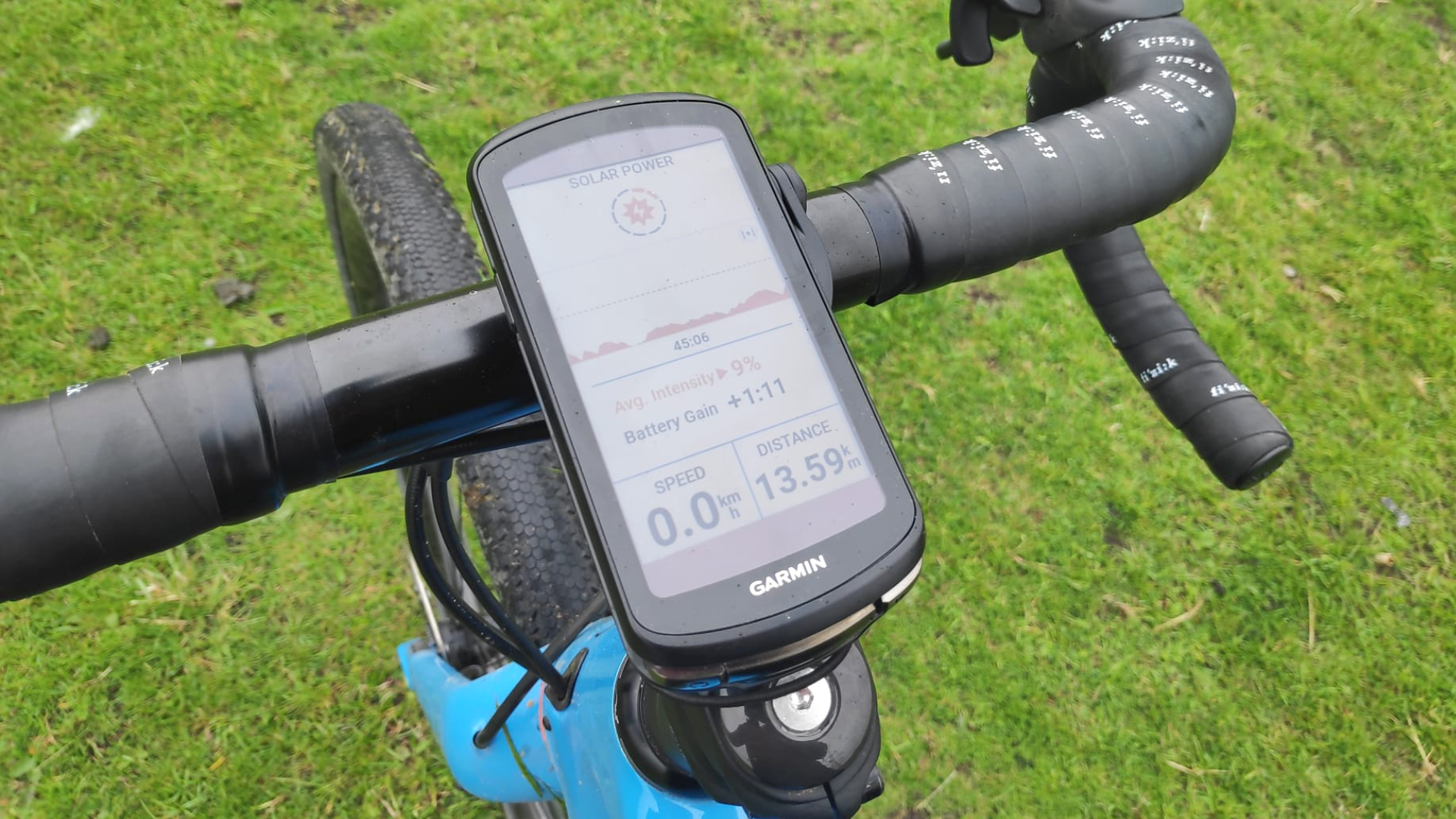
Garmin says that the Edge 1040 Solar can add 20 minute of charge for every hour of riding, but it’d be fair to say that the inclement weather of Wales doesn’t exactly make for the most ideal of testing conditions.
Still, even with the extended periods of cloud cover and intermittent showers, Stefan’s head unit only dropped to 76 per cent charge over the 275km / 170mi route – which is significantly more than you’d expect from most other head units.
And that wasn’t even with the head unit close to being on its maximum charge saving settings: The screen was left on and displaying the route for the whole distance, both a power meter and a heart rate monitor were connected and the GPS accuracy was left on a medium setting.
Garmin quotes a battery life of up to 100 hours for the solar recharging unit. but the non-solar version has a claimed battery life of up to 70 hours itself. So, even if you are spending most of your riding time in suboptimal solar conditions (heavy cloud cover or near dawn or dusk), it’s reassuring to know that the battery itself does provide a long runtime.
Multi-band GNSS
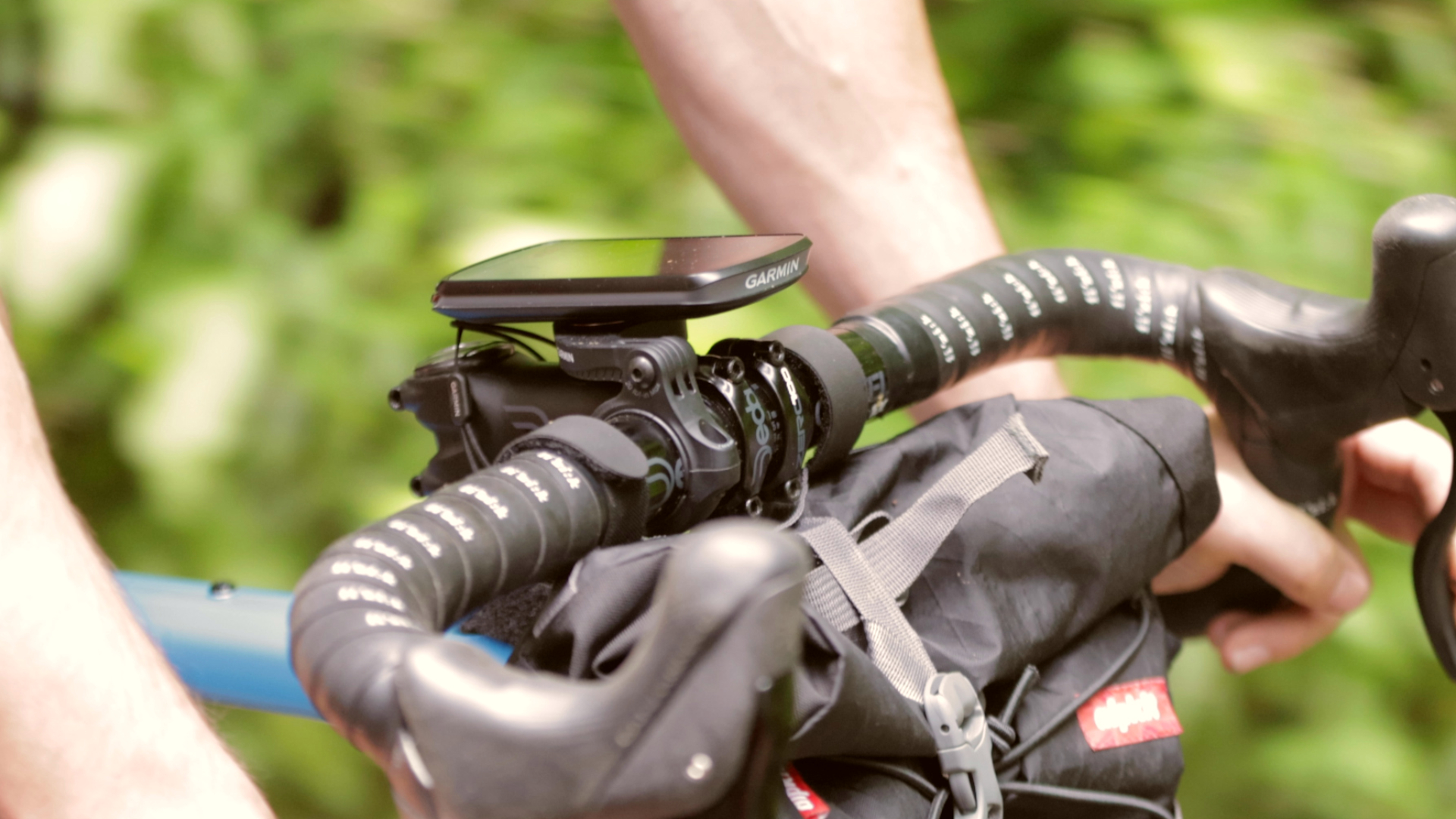
Both the Garmin Edge 1040 and the Edge 1040 Solar have seen a boost to their positional accuracy, thanks to the integration of multiband GNSS technology. This operates on a second frequency and is in addition to the utilisation of multiple satellite constellations – including GPS, GLONASS, GALILEO and BeiDou.
The upshot of all this is that users should see a vast improvement in location accuracy in mountainous, dense woodland or heavily built-up areas.
For Sam and Stefan’s ride across Wales, with it being their first long distance outings with the new head unit, they were somewhat cautious about trying to somewhat preserve battery life.
As mentioned, not to the extent of actually turning the screen or navigation off – but given that the neither route went into high mountains, dense woodland or large cities, they felt on balance it would be prudent to economise a little on the accuracy.
Given how much charge was left at the end, that decision turned out to be a lot more conversative than it needed to be! But even so, in those largely optimal conditions for GPS, the accuracy was spot-on all through the route.
And if next time they’re riding in high mountains or large cities, there won’t be such worries about switching up to the maximum accuracy.
Improved user interface
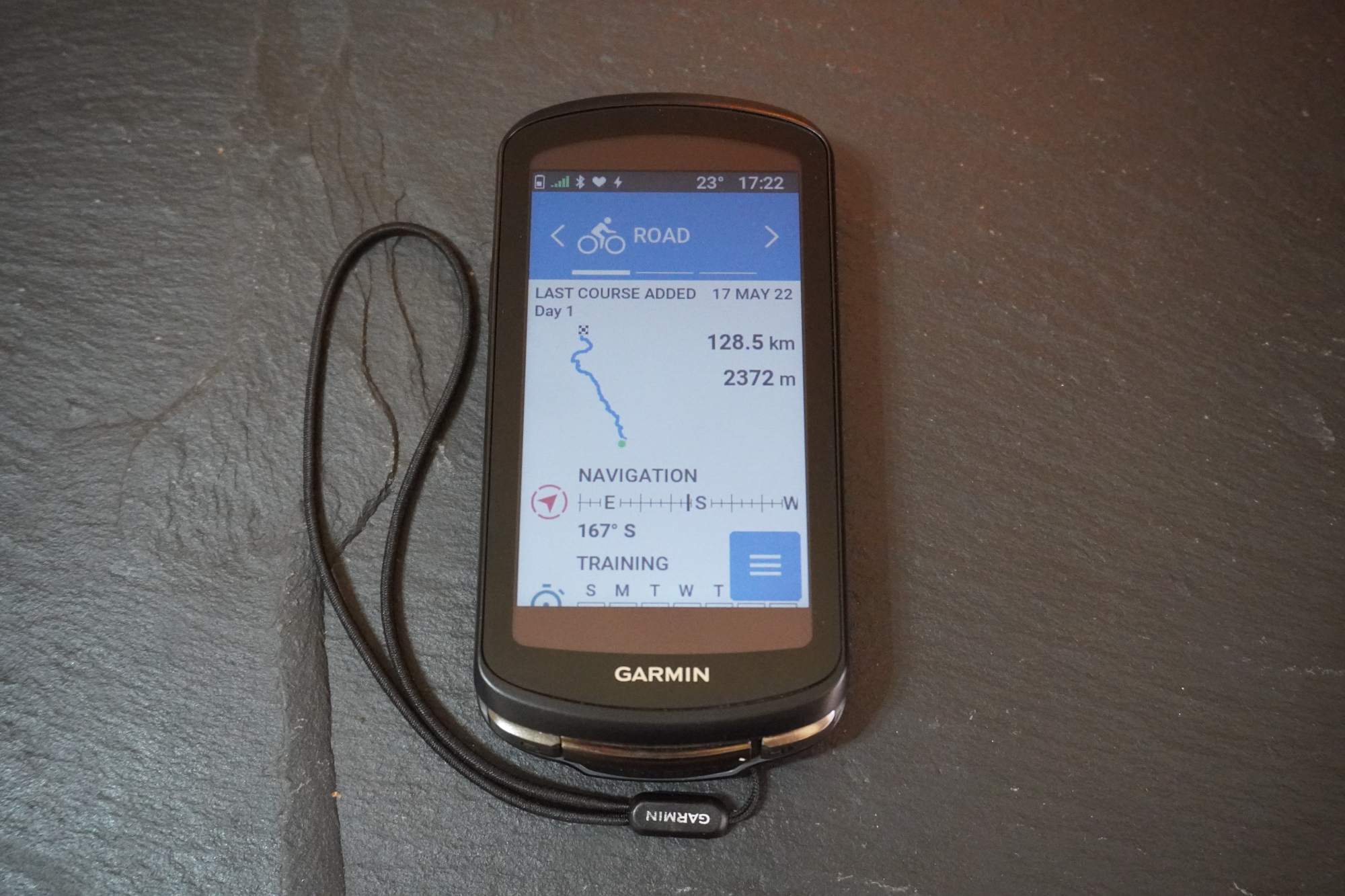
Garmin has put a lot of work into the Edge 1040 and Edge 1040 Solar to improve the user interface and make it more intuitive and easier to navigate. It’s a great update for these devices, although sadly it’s not one that will be rolled out to previous generation head units
When you first turn on the device, you land on a home page that shows your most recently added route at the top, followed by a compass, then your upcoming training schedule and – if you keep on scrolling – your activity history, notifications from your phone and the weather forecast for the next couple of hours.
These fields are fully customisable, so you can get rid of the ones that you don’t find helpful and add in others. But, as a default, having your most recent route right up there at the top does make it easy to just get out and going with minimal faff.
There’s more if you swipe down from the top of the screen – here you’re presented with five pages, each containing a different group of settings.
What’s really great is how easy it is to adjust the settings that maximise your battery life. Right there on the first page, you can adjust the brightness, choose the level of GPS accuracy (higher eats more power), and toggle the built in battery saver mode on and off.
One thing that quickly became apparent was that, between the main menu, the pull-down window and other areas on the device, there is actually a wide variety of ways to get to the same settings.
Instead of rummaging around for that one particular way of flicking switches each time, you can just go with what feels the most natural from the screen you’re on. It really does make the Edge 1040 Solar much easier to get your head around.
Power Guide
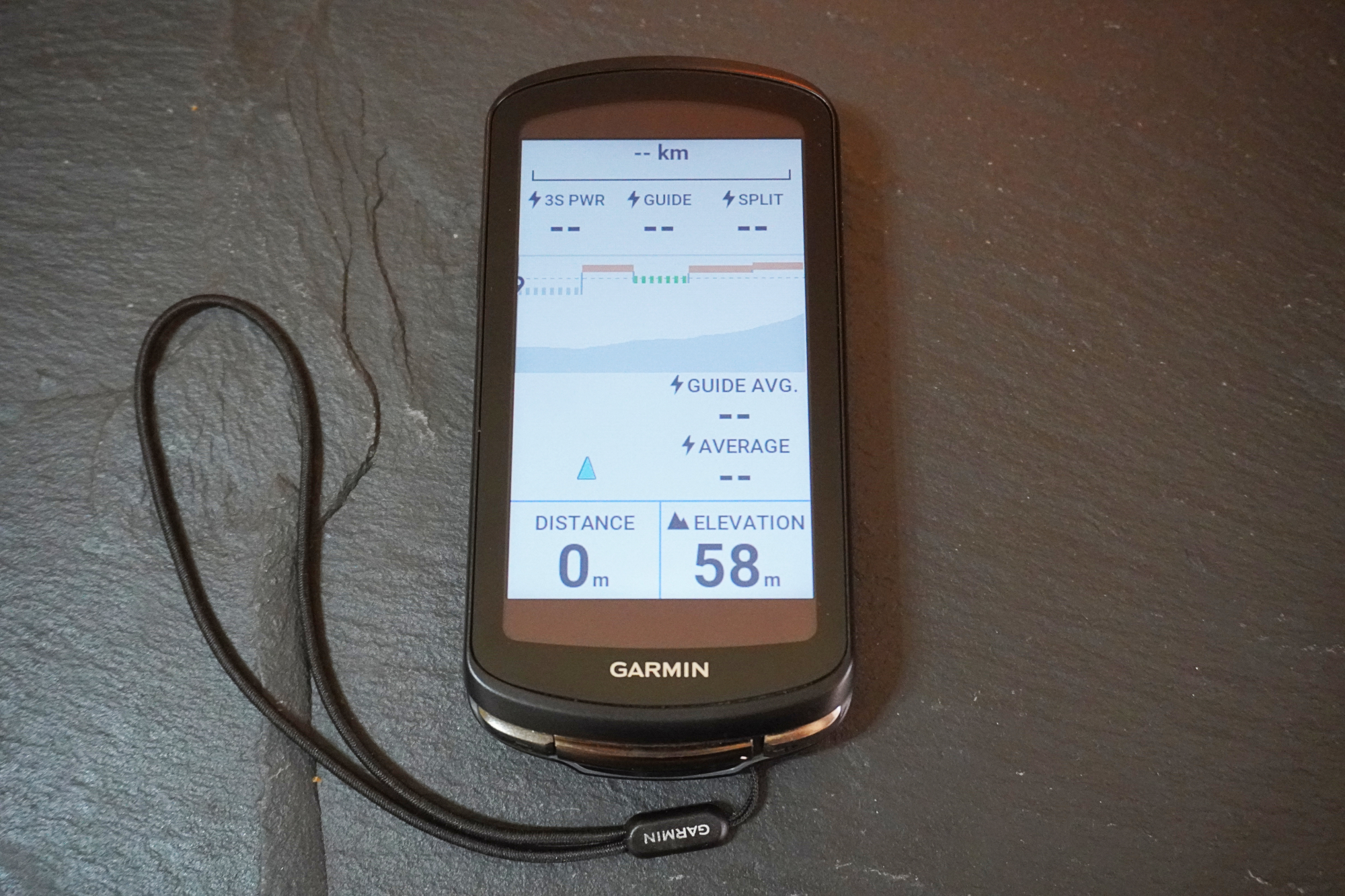
The Power Guide feature was a very interesting tool. Put in a route and it’ll generate a pacing strategy to help you tackle the course most efficiently, that is: quickly.
Because aerodynamic drag increases with the square of velocity, (doubling your speed will quadruple the drag), the faster you go, the harder you’ll have to push to get an increase in speed.
Think of it this way, you could average 150 watts going up a hill and maintain the same power down the other side, or you could push much harder up the hill and freewheel down the other side – even if the average power remains the same in both, your average speed will be faster in the latter.
And that’s what the Garmin Power Guide essentially works out. Once you’ve inputted your FTP and some information about the bike you’re riding and just how hard/fast you want to go, it’ll display what power you need to ride at to be most efficient in terms of your speed and also your stamina.
That might see you surging into the red on short, sharp climbs whilst softly pedalling on gentle descents, using them as an opportunity to recover without losing much speed.
Seasoned riders develop something of a sense for this: knowing when to back off and when to push is part of the art of riding a fast TT on an undulating course or going solo on a break. But for beginner and intermediate riders, the advice could well be useful.
Pricing
There’s even more to the Garmin Edge 1040 and the Edge 1040 Solar – they are both packed to the brim with technology and features. If you already own a Garmin head unit, some of these will be familiar to you, such as with the Climber Pro app, Strava segment support, nutrition tracking, training load analysis and Garmin LiveTrack.
The Edge 1040 is priced at £519.99 while the Edge 1040 Solar is £629.99. You can find more information about both the devices on Garmin.com.
The latest race content, interviews, features, reviews and expert buying guides, direct to your inbox!
Founded in 1891, Cycling Weekly and its team of expert journalists brings cyclists in-depth reviews, extensive coverage of both professional and domestic racing, as well as fitness advice and 'brew a cuppa and put your feet up' features. Cycling Weekly serves its audience across a range of platforms, from good old-fashioned print to online journalism, and video.
-
 As a fellow cycling parent, here are my top 9 recommendations for fun, practical last-minute kids' bike stocking fillers!
As a fellow cycling parent, here are my top 9 recommendations for fun, practical last-minute kids' bike stocking fillers!People always ask me what they should buy their cycling and bike loving kids for Christmas, so whether you're organised or last minute, this is my definitive list. They're all fun, practical, and easy to grab before the big day arrives!
-
 Great Britain dominate with 11 victories at key end-of-year track cycling event in Switzerland
Great Britain dominate with 11 victories at key end-of-year track cycling event in SwitzerlandSquad takes home 18 medals from the Tissot Track Cycling Challenge